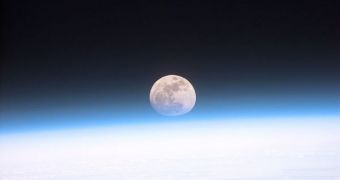Researchers proposed a long time ago that atmospheric pressure might be one of the key factors determining the habitability of Earth-like planets. Over geological timescales, of millions to billions of years, variations in this pressure may be what determines a planet's ability to foster primitive life. A new study suggests this is what happened to the Earth, where nitrogen now stored in the crust and mantle kept the planet from freezing over, thus ending all hopes of life ever existing. Though now this may seem impossible, things were different in the early days of the solar system.
Some 4.5 billion years ago, when the Sun and the Earth were formed, several hundred million years apart, the star was a lot weaker than it is today. It did not emit as much heat, radiation and light as it does now, so our planet was subjected to a different set of factors than it currently is. Under these conditions, it would have been remarkably easy for the Earth to become a barren, inhospitable wasteland. But experts believe that it was nitrogen that almost single-handedly prevented that from happening. Geological surveys show that, even two billion years after the planet was formed, it received just 80 percent of the warmth it does today.
In charge of the study that came to this conclusion was NASA Ames Research Center postdoctoral fellow Colin Goldblatt. He led the research team that proposed nitrogen was responsible for keeping the planet in good shape to support life. Previous explanations on this issue included taking high ammonia and carbon dioxide abundances into account, but they failed to explain all of the early traits that geologists were seeking to make sense of. According to Goldblatt and his team, the mantle and crust currently hold twice as much nitrogen as the atmosphere. Almost 78 percent of the latter is made up of nitrogen, Nature News reports.
“This is a terrific thought experiment tied to rigorous analysis of the nitrogen cycle. The basic idea – that nitrogen is fixed biologically and buried with organic matter and, through subduction, transferred to the mantle – is clever and clean. The question then becomes one of constraining when and why this sink turned on, and how the world responded,” Timothy Lyons says of the study. He is a biogeochemist at the University of California in Riverside (UCR). Lyons was not a part of the new study.

 14 DAY TRIAL //
14 DAY TRIAL //